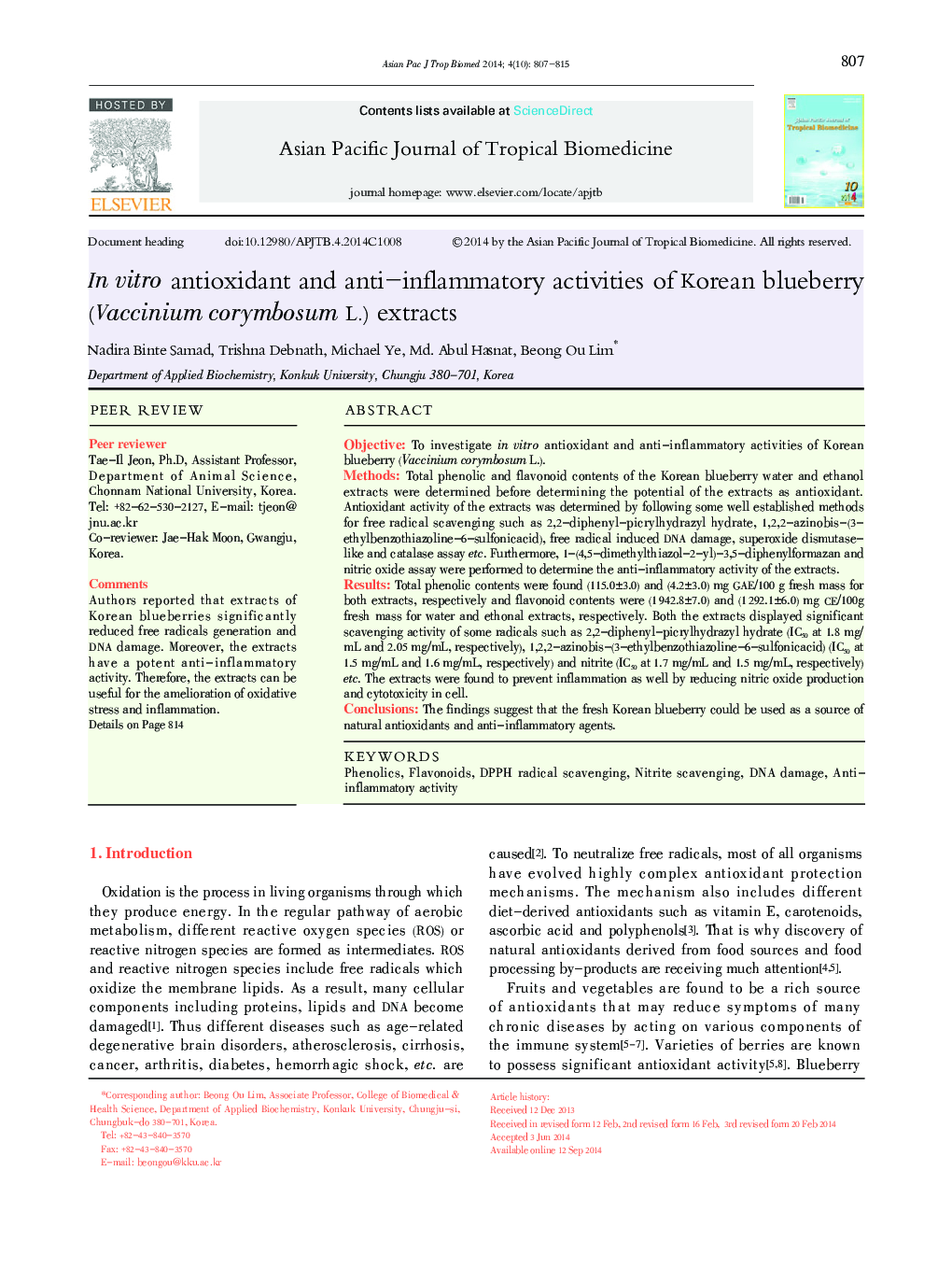| Article ID | Journal | Published Year | Pages | File Type |
|---|---|---|---|---|
| 2032880 | Asian Pacific Journal of Tropical Biomedicine | 2014 | 9 Pages |
ABSTRACTObjectiveTo investigate in vitro antioxidant and anti-inflammatory activities of Korean blueberry (Vaccinium corymbosum L.).MethodsTotal phenolic and flavonoid contents of the Korean blueberry water and ethanol extracts were determined before determining the potential of the extracts as antioxidant. Antioxidant activity of the extracts was determined by following some well established methods for free radical scavenging such as 2,2-diphenyl-picrylhydrazyl hydrate, 1,2,2-azinobis-(3-ethylbenzothiazoline-6-sulfonicacid), free radical induced DNA damage, superoxide dismutase-like and catalase assay etc. Furthermore, 1-(4,5-dimethylthiazol-2-yl)-3,5-diphenylformazan and nitric oxide assay were performed to determine the anti-inflammatory activity of the extracts.ResultsTotal phenolic contents were found (115.0±3.0) and (4.2±3.0) mg GAE/100 g fresh mass for both extracts, respectively and flavonoid contents were (1 942.8±7.0) and (1 292.1±6.0) mg CE/100g fresh mass for water and ethonal extracts, respectively. Both the extracts displayed significant scavenging activity of some radicals such as 2,2-diphenyl-picrylhydrazyl hydrate (IC50 at 1.8 mg/mL and 2.05 mg/mL, respectively), 1,2,2-azinobis-(3-ethylbenzothiazoline-6-sulfonicacid) (IC50 at 1.5 mg/mL and 1.6 mg/mL, respectively) and nitrite (IC50 at 1.7 mg/mL and 1.5 mg/mL, respectively) etc. The extracts were found to prevent inflammation as well by reducing nitric oxide production and cytotoxicity in cell.ConclusionsThe findings suggest that the fresh Korean blueberry could be used as a source of natural antioxidants and anti-inflammatory agents.
